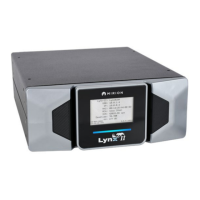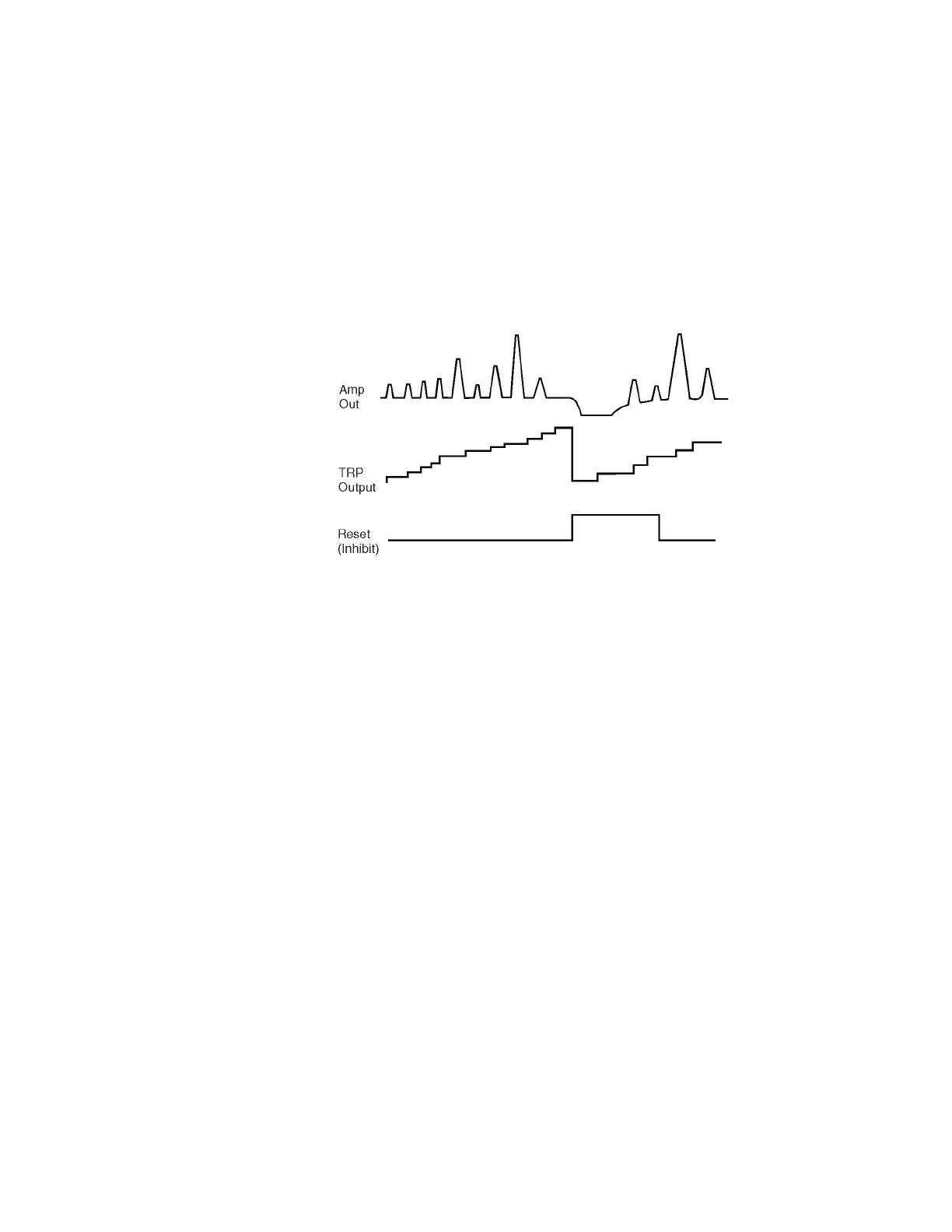Appendix E Operation with Reset Preamps
176 Lynx II DSA User's Manual - 7096089
Using the Reset Input and Inhibit Function
During the preamp reset interval, the preamp reset event produces a large signal, driving
the Lynx II into severe overload. The Lynx II automatically senses reset events and gates
off pulse processing during the associated overload event. However, to obtain optimum
performance, especially at high count rates, it is recommended that the preamplifier’s
Inhibit signal be connected to the Reset Inhibit input on the Lynx II and the Inhibit
Polarity be set appropriately. The figure shows a representation of the Trapezoid signal at
the output of the digital filter, as well as the Preamp Output and Inhibit signals.
Figure 78: Monitor Output, TRP Output, TRP Inhibit
The Lynx II system inhibit is initiated or derived from the Inhibit signal generated by the
Reset Preamp. The optimum system inhibit time can be set automatically by the Lynx II or
adjusted manually using the TRP Inhibit adjustments located on the fourth page of the
MCA | Adjust | Gain screen in the Acquisition and Analysis window.
Automatic Inhibit Mode
For automatic inhibit, set the Inhibit Mode to Auto; this is the default setting. When using
the Auto mode, the correct system inhibit time is automatically set. It is not necessary to
make critical adjustments to the inhibit signal at the preamp. However, if the reset preamp
is equipped with an adjustable inhibit signal pulse width, it should be set to its minimum
value. Please consult the Detector/Preamp Operator’s manual for this adjustment.
Note: When using the Automatic Reset inhibit mode, the total system inhibit duration is
the time interval automatically generated by the Lynx II “OR” the external
(preamp) inhibit duration, whichever lasts longer. For proper automatic operation
set the preamp inhibit time to its minimum, or it can override the optimum inhibit
time generated by the Lynx II.

